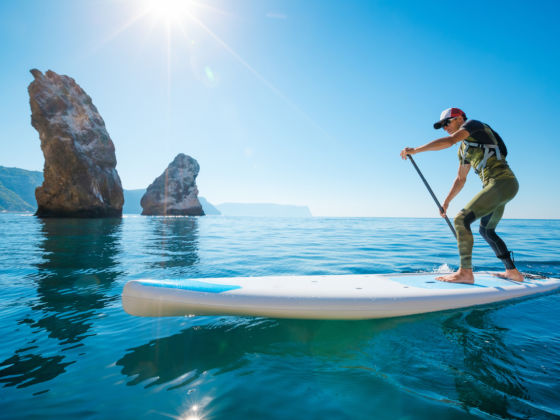Fastpacking is ultralight backpacking combining trail running and hiking to propel hikers further and deeper into the wilderness. Fastpackers can travel upwards to 30 miles a day with their ultralight packs, simple shelters, and minimalist food supplies. Without such modern day distractions like deluxe multi-tools and a handheld GPS, fastpacking is a way to get more immersed in the terrain and the experience of moving through it..


3. Four Square
Grab some sidewalk chalk and a rubber playground ball and you are good to go. Four square has moved off the playground and into the driveways of hip twenty and thirty-somethings across the US and Canada. A court is drawn up with four squares of equal size and each square occupies a single player. The player in the top spot serves the ball into any other player’s square and play continues until someone misses the ball or messes up and that person is eliminated allowing everyone to move up a square and get closer to the highly coveted “King” spot.
4. Geocaching
Search high and low for hidden treasures in this huge global game of hide and seek. Geocachers use a GPS to find treasure stashes anywhere in the World. Geocaches are usually waterproof containers that contain a logbook and some trade items that a geocacher hid and then logged the GPS coordinates online for other geocachers to find.
Geocaches have varying difficult levels from simple drive-ups to more complex searches requiring long off-road drives, scaling mountain peaks, or underwater dives. Geocaches are even found in such far-flung destinations as Antarctica and north of the Arctic Circle.
5. Packrafting
Backcountry exploration is often limited by water crossings–creeks, rivers, wetlands, or lakes that because of temperature and other factors, are impassable with out some kind of boat.
Packrafts are lightweight, portable boats compact enough to be carried during treks through backcountry terrain. Along with collapsible paddles and safety equipment, packrafting gear weighs last than nine pounds and fits into your backpack right alongside other backcountry equipment.
6. Bike polo
Construct a homemade mallet with PVC pipe, a ski pole, and hockey tape and head out to your local parking garage for a game of urban bike polo. Played in parking garages, basketball courts, or any other urban concrete slab urbanites can find teams of bikers use mallets to strike a ball into a goal.
In contrast to the mellower version of bike polo played in the grass, urban bike polo often results in plenty of crashes and carnage. As far as rules go bike polo has more in common with hockey than the traditional horse-riding polo. The game begins with a ball placed in the middle of the court and each team waits behind their goal and then charges the ball when the game is called to a start. The game continues until a team reaches a preset number of goals or reached a time limit.
7. Parkour
Flip, jump, and vault your way over walls, fences, and other urban obstacles. Parkour is actually a philosophy of movement in addition to a sport – think urban gymnastics meets humanistic theory. The object of parkour is to get from one place to another in the most efficient way possible using only the body and other objects in the environment. Parkour is about overcoming mental barriers as well as physical barrier and parkour strongly discourages competition, reckless behavior, and risky stunts.
8. Longboarding
Carve down paved hills on a snowboard with wheels. Longboarding is just downhill skateboarding with a longer and wider board. There are no freestyle moves, aerials, or flip tricks in longboarding, it is all about cruising from one place to another with smooth fluid movements creating that feeling of snowboarding or surfing.
9. Extreme Croquet
Drive croquet balls through weeds, rivers, sand, and mud. Extreme croquet in contrast to the regular backyard variety is an anything-goes version of croquet where there are no boundaries to the playing area, a number of unique and interesting challenges, and ridiculous house rules or no rules at all.
10. Stand-up Paddling
Paddle through flat water and into waves while standing up on a super long surfboard. Stand-up paddle surfing is an old school Hawaiian sport originating in the 1940s when Waikiki beach boys would paddle out on their longboards to take pictures of the tourists on shore. Since then stand-up paddling has exploded in popularity because of its quick learning curve and simple nature – most people are up and paddling within 30 minutes of learning.
Note: This article is sponsored by our friends at KEEN. Win a pair of free KEEN’s by entering the HybridLife photo contest.
Are there any sports we missed? Share your picks in the comments!